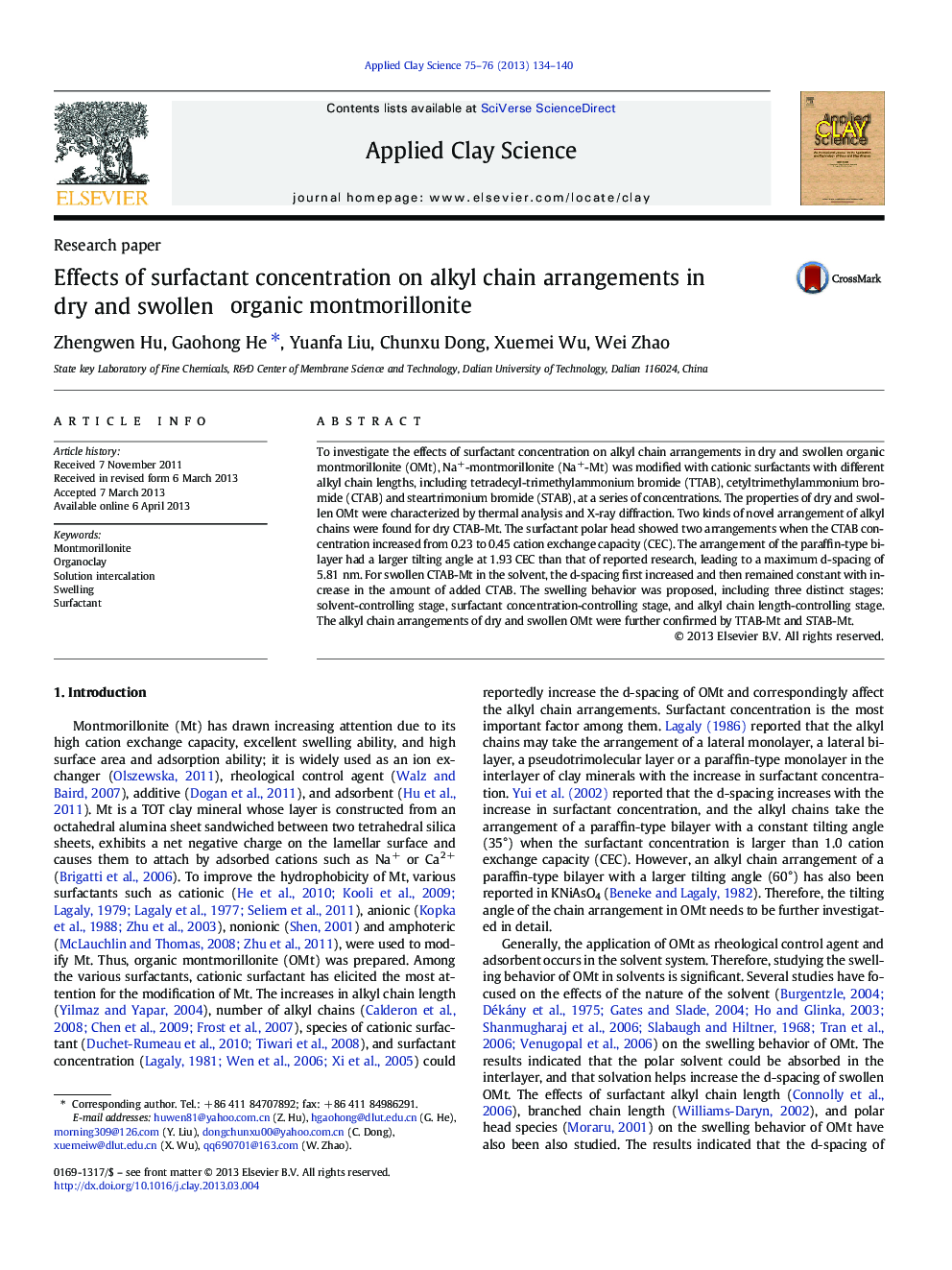| Article ID | Journal | Published Year | Pages | File Type |
|---|---|---|---|---|
| 1695046 | Applied Clay Science | 2013 | 7 Pages |
•The d-spacings of dry and swollen OMt are affected by surfactant concentration.•The surfactant polar head overturns at a low concentration for the dry OMt.•The maximum d-spacing of dry OMt larger than previous reported is founded.•Alkyl chains form a paraffin-type monolayer in NMP with various tilting angles.•Solvent polarity, surfactant loading and molecular length control OMt swelling.
To investigate the effects of surfactant concentration on alkyl chain arrangements in dry and swollen organic montmorillonite (OMt), Na+-montmorillonite (Na+-Mt) was modified with cationic surfactants with different alkyl chain lengths, including tetradecyl-trimethylammonium bromide (TTAB), cetyltrimethylammonium bromide (CTAB) and steartrimonium bromide (STAB), at a series of concentrations. The properties of dry and swollen OMt were characterized by thermal analysis and X-ray diffraction. Two kinds of novel arrangement of alkyl chains were found for dry CTAB-Mt. The surfactant polar head showed two arrangements when the CTAB concentration increased from 0.23 to 0.45 cation exchange capacity (CEC). The arrangement of the paraffin-type bilayer had a larger tilting angle at 1.93 CEC than that of reported research, leading to a maximum d-spacing of 5.81 nm. For swollen CTAB-Mt in the solvent, the d-spacing first increased and then remained constant with increase in the amount of added CTAB. The swelling behavior was proposed, including three distinct stages: solvent-controlling stage, surfactant concentration-controlling stage, and alkyl chain length-controlling stage. The alkyl chain arrangements of dry and swollen OMt were further confirmed by TTAB-Mt and STAB-Mt.
Graphical abstractThe alkyl chain arrangements in the interlayer.Figure optionsDownload full-size imageDownload as PowerPoint slide
